The National Football League is no stranger to colossal players, but few might realize that the Average Height of NFL Players in 2024 (By Position) towers at around 6 feet 2.16 inches, underscoring the imposing physicality required in the league. As physical attributes continue to play a foundational role in the sport, this statistic reveals the selective evolution of player physiques across the board.
An in-depth look into the NFL player height statistics 2024 further illustrates this fascinating aspect of professional American football, offering a window into how some of the best athletes in the world are literally measured by their ability to meet the rigorous demands of their positions.
Height in football extends beyond mere inches; it’s a piece of the strategic puzzle, influencing everything from quarterback visibility to the reach advantage of a wide receiver. The NFL player average height by position isn’t just a number–it’s a reflection of the sport’s biomechanical requisites, tailored to the tactical essence of each role. Understanding the physical benchmarks of today’s NFL athletes provides a clearer picture of the game’s rapidly evolving landscape.
Key Takeaways
- The stature of NFL players reflects the league’s evolving standards for positional requirements.
- Quarterbacks, linemen, and receivers often eclipse average height metrics to meet role-specific demands.
- NFL player height trends signal a potential increase in average heights by 2024, given recent growth patterns.
- Studying the Average Height of NFL Players in 2024 (By Position) can aid in anticipating the league’s physical and strategic future.
- The impact of a player’s height on their performance, while significant, is just one factor amid a complex blend comprising skill, speed, and strategy.
- Success in the NFL is not limited by height, as historically undersized players continue to make significant contributions to their teams.
- Football continues to be a game of inches, not only on the field but also in the physical makeup of the athletes who play it.
Introduction to NFL Player Physical Dynamics

Source: steelsupplements.com
The dimensions of NFL athletes have strategically evolved to shape the game we see today. Analyzing NFL player heights in 2024 offers insights into how physicality underpins performance across various positions on the field. Stature not only drives athletic prowess but is also instrumental in the execution of specific roles, from a quarterback’s line of sight to a wide receiver’s catch radius. Here, we delve into the average height of NFL players in 2024 by position, examining trends that have influenced these modern gladiators of the gridiron.
Physical attributes in the NFL are meticulously analyzed, with height being a significant factor influencing team composition and gameplay strategy. As we look at the data for 2024, it’s clear that certain positions have emerged where height advantages are not merely beneficial but essential. In this section, we highlight the correlation between player height and positional demands, preparing fans and analysts alike to better understand the NFL player height trends in 2024.
Team rosters are constructed with the understanding that the average height of NFL players can affect critical aspects of the game: blocking, tackling, passing, and receiving. A towering offensive lineman creates a formidable barrier, while a lanky cornerback has the extended reach for interceptions. However, versatility remains key, and there is a place for athletes of various statures to make an impact. As the league evolves, so do the archetype builds for each position, reshaping the physical dynamics that are central to football’s highest level.
Navigating through the complexities of NFL player stature involves a blend of statistics and real-world observation. Below is a detailed breakdown of the average height of NFL players in 2024 by position, shedding light on one of the sport’s integral components – its athletes’ height:
| Position | Average Height | Notable Trend |
|---|---|---|
| Quarterbacks | 6’3″ | Increase in taller QB prospects |
| Running Backs | 6’0″ | Diversity in height reflecting varied play styles |
| Wide Receivers | 6’2″ | Preference for taller, physical receivers |
| Tight Ends | 6’4″ | Emergence of ex-basketball players with notable height |
| Offensive Linemen | 6’5″ | Trending taller for increased leverage |
As the NFL inches closer to the 2024 season, paying close attention to NFL player height trends will undoubtedly be part of the narratives unfolding in the sport’s storied franchises. The data not only informs us about the current physical standards but also paves the way for anticipating future player development and recruitment strategies.
Comprehensive Overview of Average Height of NFL Players in 2024 (By Position)
The strategic physicality within the NFL is showcased in the height breakdown of NFL players 2024. The data engagingly narrates how player dimensions are woven tightly with their on-field roles. Quarterbacks towering with an average stature register enhanced vision over the scrimmage line, while the relatively compact build of running backs avails them a low center of gravity for quick, evasive maneuvers.
Undoubtedly, each position espouses a unique blueprint of ideal height, zealous to deliver performance dividends. This intrinsic link aids a NFL player height comparison by position 2024, offering profound insights into the layout of successful team anatomy. Consequently, through meticulous NFL player height data analysis 2024, one gains a quintessential context for honing strategies or scrutinizing game-day matchups.
| Position | Average Height | Attributes Benefited |
|---|---|---|
| Quarterbacks | 6’2″ | Field vision, defensive reads |
| Running Backs | 6’0″ | Agility, center of gravity |
| Wide Receivers | 6’2″ | Reach, catching radius |
| Tight Ends | 6’3″ | Blocking, pass-catching |
| Offensive Linemen | 6’5″ | Power, protection |
| Defensive Positions | Varied | Leverage, pass rush |
Through this data-driven portrait, one can fathom the implicit standardizations and preferences that govern modern NFL recruitment and gameplay philosophy.
The Stature of Leadership: NFL Quarterbacks
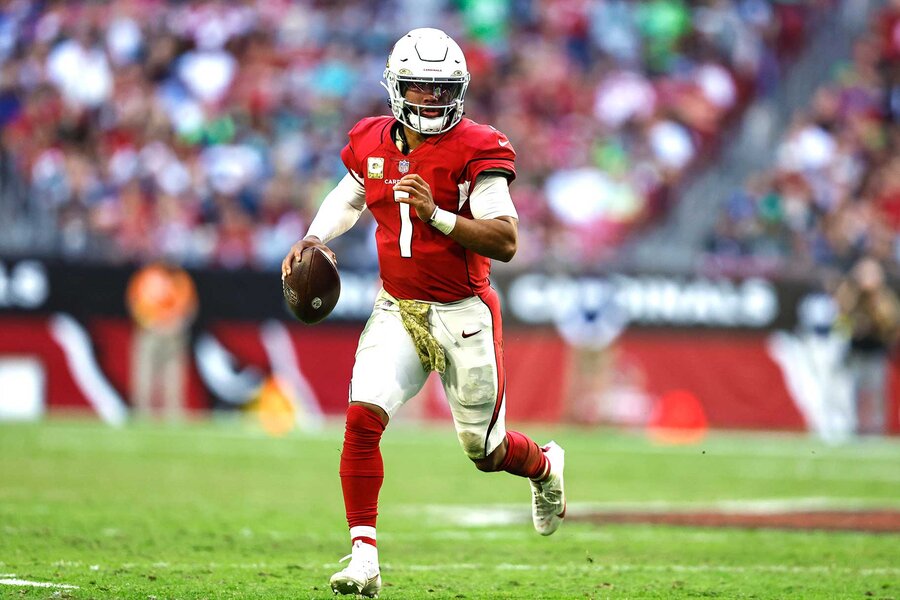
Source: nbc.com
In the echelons of the NFL, the quarterback is often seen not only as a key player but as a symbol of leadership, requiring a stature that matches their strategic importance. With the progressive march towards the 2024 NFL season drawing closer, there is increasing focus on the NFL player average height by position, particularly within the quarterback role. These players dictate the tempo of the game, requiring a view unobstructed by the human walls formed by the offensive line.
The average height for NFL quarterbacks has been slowly rising over the years, with the 2022-23 season registering average quarterback heights at an impressive 6 feet 2.49 inches. This trend stands as a testament to the perceived advantage higher vantage points offer in quarterback play – aiding these field generals in making decisive and accurate analyses of defensive setups.
Theose also keenly observing—NFL quarterback height trends 2024—note a fascinating evolution. While tall stature remains the prototype, athletes like Kyler Murray undermine the traditional expectations, successfully leveraging agility over height. These deviations signal a subtle yet significant shift in the game’s philosophy and the potential for greater height variance in the quarterback position.
Height is traditionally equated with a clear line of sight and a presumed advantage. However, the growing acceptance of quarterbacks who don’t fit this mold speaks to a broader appreciation for diverse playing styles in the NFL.
In light of these insights, here’s an illustrative look at the 2024 NFL Player Height Averages by Position, emphasizing quarterbacks:
| Position | Average Height (Feet and Inches) | Average Height (Centimeters) |
|---|---|---|
| Quarterback | 6′ 2.49″ | 189.19 |
| Running Back | 6′ 0.59″ | 184.37 |
| Wide Receiver | 6′ 2″ | 187.96 |
| Tight End | 6′ 3.1″ | 190.76 |
This table reflects not just the imposing stature commonly associated with quarterbacks, but also the relative heights across key offensive positions that shape the game’s tactical landscape.
As we progress towards the upcoming NFL season and further seasons beyond, such as 2024, the sports community will no doubt keep a watchful eye on these physical trends. Whether the typical quarterback will continue to ‘stand tall’ or there will be a broader embrace of diversity in physicality remains an unfolding chapter in the storied pages of NFL history.
Evolution of NFL Running Backs’ Height
The stature of NFL running backs has always played a strategic role in the evolving dynamics of football. As we head into 2024, a close examination of NFL running back height statistics reveals a trend that underscores the diversity of this position. The NFL running back height averages at 6 feet 0.59 inches, indicative of a role that requires a balance between power and agility.
These athletes epitomize the changing playbooks of NFL teams, which now often utilize a combination of running styles. In this era, the versatility of a running back’s skill set can be somewhat dependent on their physical dimensions. The NFL player height trends 2024 suggest that teams are valuing a broad range of height within the backfield, each bringing a unique element to the ground game.
Analyzing Trends Among NFL Backfield
The trend toward a committee approach has fostered a group of running backs that vary significantly in height. This strategy has necessitated that teams recruit and train running backs who can specialize in various types of plays, from elusive jukes to bulldozing forward through the defensive line.
Height Variances Among Elite NFL Running Backs

Source: nfl.com
The diversification in height among elite NFL running backs reflects the evolution of the position’s responsibilities. While the average height of NFL players in 2024 continues to set a standard, the unique talents of shorter and taller running backs are celebrated and strategically employed in the game. Their height not only influences their running style but also plays a role in pass protection and reception tasks, highlighting their multidimensional contributions to the offensive schemes.
Height Analysis of NFL Wide Receivers
Analyzing the evolution of NFL wide receiver height data in 2024 reveals a fascinating trend toward taller athletes, capable of elevating their team’s offensive game to new heights. While the 2024 NFL player heights are still within the lines of historical progressions, we’re noticing a marked interest in wideouts who bring an imposing physicality to the gridiron, possibly shifting the Average Height of NFL Players in 2024 (By Position) upwards.
Taller wide receivers are often seen as having an edge in reaching high-thrown balls, providing an advantage over shorter defensive players. This factor can dramatically increase a receiver’s catch radius, making them an invaluable target during critical passing plays. Due to these advantages, teams have been investing in analyzing NFL player heights in 2024 to gain a competitive edge.
| Wide Receiver’s Height | Notable Advantage | Impact on Gameplay |
|---|---|---|
| 6’4″ and above | Extended Reach on High Throws | Enhanced Red-Zone Efficiency |
| 6’1″ – 6’3″ | Balance of Reach and Agility | Reliable Route-Running and Versatility |
| Under 6’0″ | Lower Center of Gravity for Sharp Cuts | Potential for Increased YAC (Yards After Catch) |
Through meticulously compiled NFL wide receiver height data for 2024, we see a broadening understanding and strategic deployment of tall receivers’ attributes. Whether it’s for their ability to overshadow a defender, their overarching catching sphere, or their signal-bending size that obscures the pass trajectory, tall receivers are in demand, potentially nudging the average height of NFL players in 2024 across the roster.
The Towering Tight Ends of the NFL
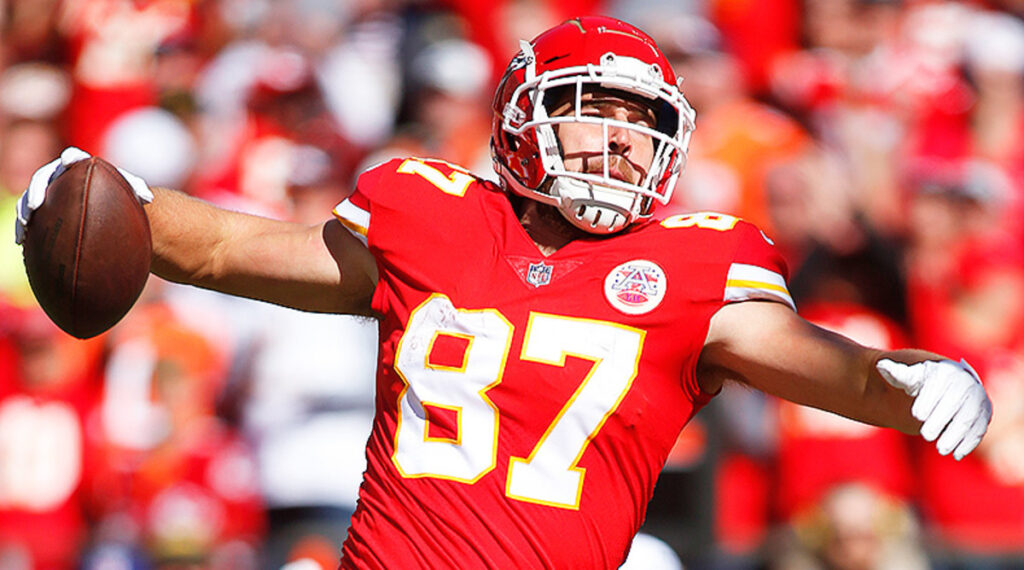
Source: athlonsports.com
The role of the tight end in the NFL strikes a delicate balance between the raw power necessary for blocking and the finesse required for catching passes. Significantly, the NFL tight end average height 2024 continues to spotlight tight ends as among the tallest players on the field, with an expected average height surpassing 6 feet 3 inches.
Height Expectations for Pass-Catching Linemen
In a league where inches can determine the outcome of crucial plays, the height of a tight end plays a fundamental role. Whether it’s rising above defenders to secure a high-flying pass or holding off an oncoming linebacker, their stature provides a competitive edge that can be the difference between a game-winning play and an incomplete pass. This is why the NFL player average height by position, especially among tight ends, remains a closely monitored statistic.
Basketball Backgrounds: A Tall Tale in Tight Ends
When examining the height breakdown of NFL players 2024, the athletic backgrounds of tight ends often include experience on the basketball court. This crossover experience imbues them with unique athleticism, spatial awareness, and hand-eye coordination, qualities that greatly benefit their performance on the gridiron. Several successful NFL tight ends exhibit the agility and height reminiscent of basketball players, a trend that may continue to shape the archetype of this position.
The evolution of the tight end role mirrors the game’s constant state of innovation, ensuring that by 2024, the NFL will boast an impressive roster of these versatile giants, reflecting an ever-growing standard for their already impressive stature.
Offensive Linemen: The NFL’s Sizeable Wall
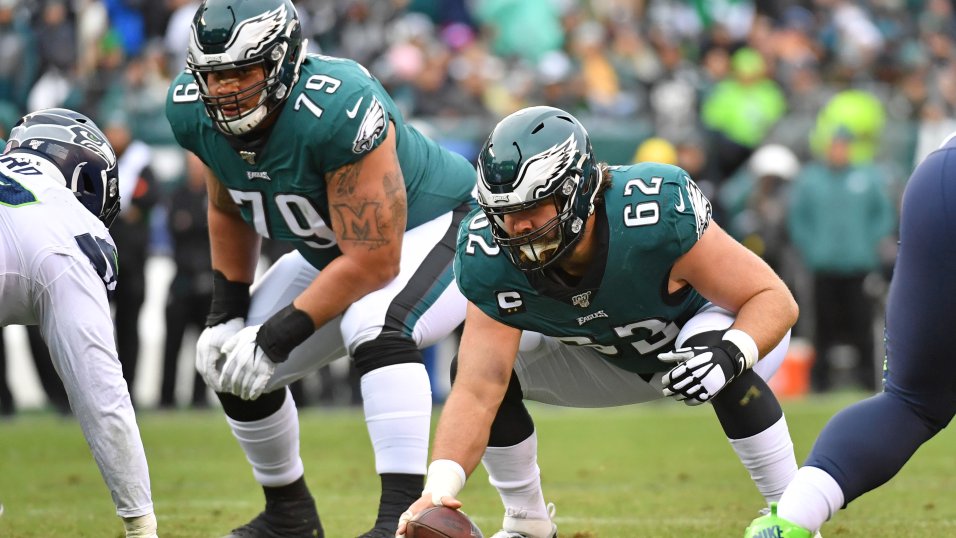
Source: pff.com
The protectors of the pocket, NFL offensive linemen, have showcased a significant trend towards towering statures, a physical characteristic that bolsters both their defensive blockade and imposing on-field presence. Tapping into the NFL offensive linemen height trends 2024, research indicates that these gridiron giants maintain an average height that not only eclipses most other positions but also underscores the inherent physicality of their role.
With the evolution of offensive strategies and a nod towards maximizing player protection, the Average Height of NFL Players in 2024 (By Position) remains a critical factor in team composition and draft considerations. It is within this context that the offensive linemen stand out, embodying the sheer scale and athletic prowess required to compete at the highest level.
A comparative analysis of line sizes reveals the extent to which the NFL’s front manifests an array of towering figures, each bringing varied advantages to their squad. This diverse mix of athletes demonstrates that while there may be an inherent physical archetype, the on-field reality accommodates a wider gamut of heights. The NFL player height comparison by position 2024 places offensive linemen at a formidable peak, underscoring their key role in offensive play.
| Position | Average Height | Height Range |
|---|---|---|
| Offensive Linemen | 6 feet 3.55 inches (191.89 cm) | 6’1″ to 6’9″ |
| Offensive Tackles | 6 feet 5 inches (195.58 cm) | 6’4″ to 6’8″ |
| Centers | 6 feet 3 inches (190.5 cm) | 6’2″ to 6’5″ |
| Guards | 6 feet 4 inches (193.04 cm) | 6’2″ to 6’7″ |
This robust cadre of players proves indispensable to any offensive unit seeking to gain territorial advantage or shield the quarterback from the relentless pressure of opposing defenses. As tactics evolve and players continue to hone their skills, it is without a doubt that the stature of these linemen will remain a central discussion in the conversation of 2024 NFL Player Height Averages by Position.
NFL Defensive Linemen Heights: Anchors of the Line
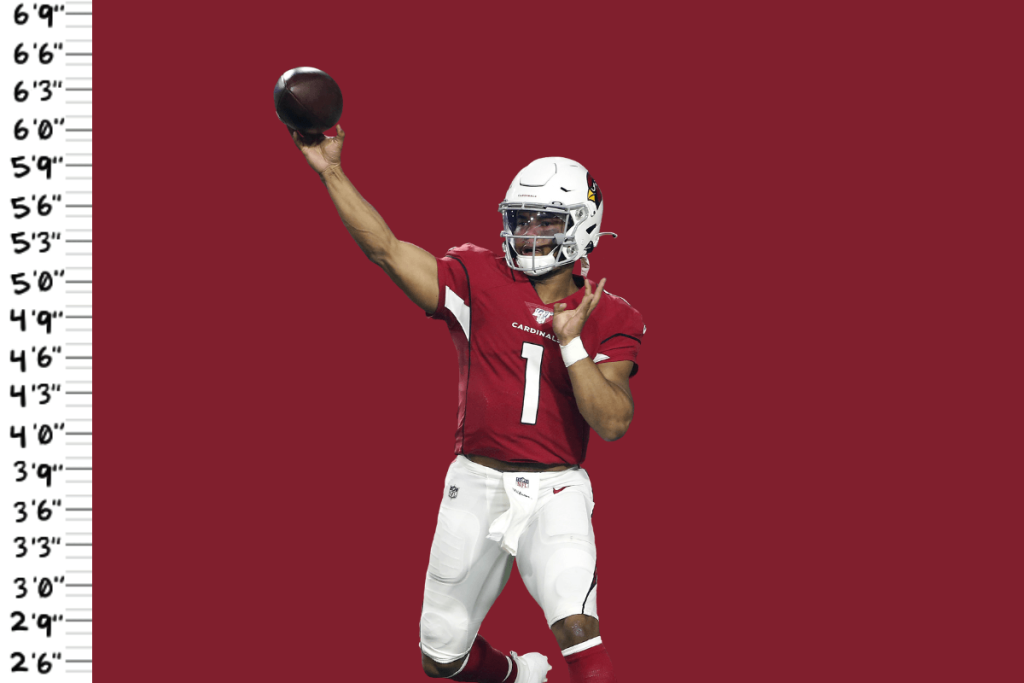
Source: jokermag.com
The front line of defense in the NFL is often where games are won or lost, and the athletes who man these positions are a testament to the fusion of size and agility. In evaluating the NFL defensive lineman height statistics 2024, one cannot ignore the significance of height as a factor in these positions. It’s the linemen who, with their physical presence, determine the success of both run stopping and pressuring the quarterback.
Defensive Strategy and Height Implications
Understanding that success in the trenches isn’t exclusively a question of altitude, but rather how well a player leverages their stature, 2024 brings forth an intriguing landscape of NFL player height trends 2024. Proving that point is the fact that stars like Aaron Donald, with their remarkable agility and technique, have demonstrated effectiveness on the defensive line despite not being the tallest in their pack.
Comparing Heights Across the Defensive Front
As we look across the various teams and align the data, it’s clear that while the average height of an NFL defensive lineman hovers near the 6-foot-3 mark, there’s a robust representation of those who break this mold. Their influence on the defensive side of the ball shapes potential shifts in recruitment and drafting, signaling a potential broadening of what it means to have an ideal physique for this role.
As the game evolves, so too do the players. Physical traits are essential, but 2024 may well continue to uphold the trend where versatility and skill sets can eclipse traditional size expectations. The 2024 NFL Player Height Averages by Position suggest a dynamic change is afoot, perhaps seeing more linemen under 6 feet not just securing but excelling in their positions.
The Vertical Aspect of NFL Linebackers
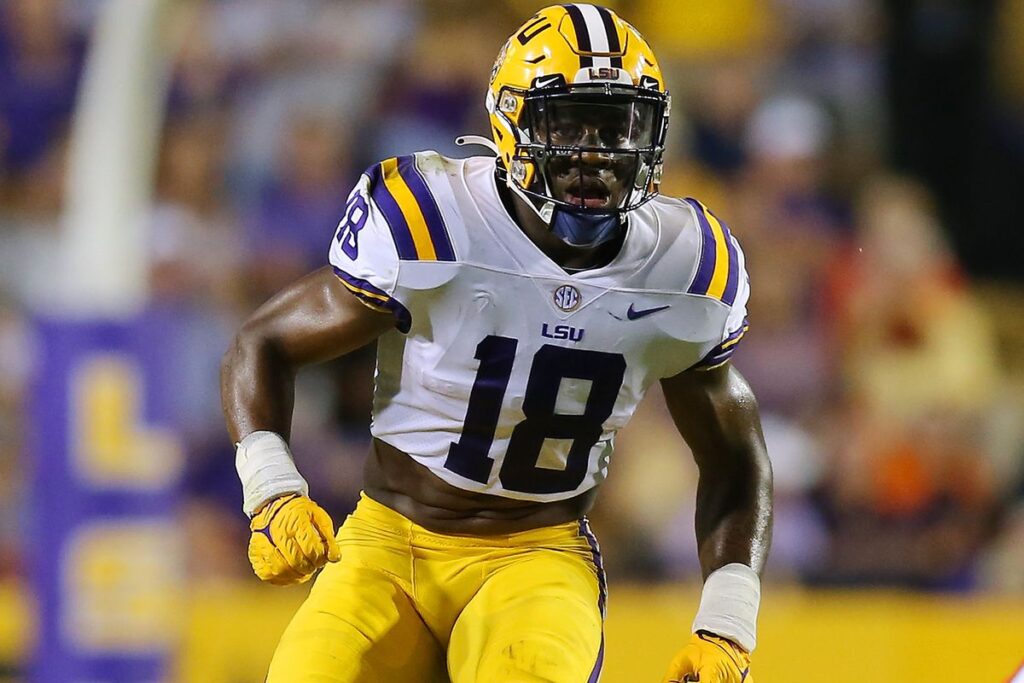
Source: bigblueview.com
Analyzing NFL player heights in the 2024 season, the linebacker role undeniably showcases a remarkable range of physical stature. Reflecting the multifaceted responsibilities from coverage to run stopping, the average height of players within this position paints a picture of diversity matched by few others on the gridiron. NFL linebacker height data 2024 indicates that the average linebacker stands at a formidable 6 feet 2.62 inches (189.53 centimeters).
Some of the prominent linebackers weigh in below this average, like Quincy Williams, whose presence at 5’11” proves height isn’t the sole metric for defensive success. On the other hierarchy of the spectrum, you find players towering over others at 6’7″, displaying that the position holds space for an extensive diversity in player heights.
The balance between the necessary compact agility required for coverage assignments and the physical intimidation to halt the run is delicately managed through this range in stature. This suggests that teams strategize their defensive chess pieces in a way that height becomes as much an advantage as it is a defining characteristic of playstyle and team composition.
As we continue analyzing NFL player heights 2024, these athletes are the embodiment of the evolution within the game, showcasing how physical metrics can be diversified to meet the shifting paradigms of modern football tactics. As such, the Average Height of NFL Players in 2024 by position will remain a topic ripe for analysis as it influences drafting, training, and in-game dynamics.
Defensive Backs: Height in the Realm of Speed and Agility
The NFL’s defensive backfield epitomizes a delicate balance where speed and agility meet stature. The year 2024 underscores a critical juncture for the analysis of defensive backs’ heights as teams continue to scout for the prototypical athletes capable of immediate impact. Height breakdown of NFL players in 2024 indicates that defensive backs hover just above six feet, with subtle variances between the roles of cornerbacks and safeties carving out the distinctive attributes sought by franchises.
Cornerbacks vs Safeties: A Height Comparison
Scrutinizing the data, a height comparison between cornerbacks and safeties reveals a nuanced but impactful difference in their physical makeup. As of 2024, cornerbacks predominantly stand at an average of approximately 5’11”, affording them a low center of gravity that befits their role in rapid directional changes and close coverage maneuvers. Conversely, safeties tend to reach the 6′ mark, giving them a slight edge in vertical contests and a broader range in aerial defense dynamics, aspects that are pivotal in NFL player height comparison by position.
Impact of Height on Pass Defense Strategies
The link between a defensive back’s height and pass defense strategies is increasingly apparent. Height grants an undeniable advantage in contesting high throws and batting down passes. However, a comprehensive NFL defensive backs height analysis 2024 shows that it’s not the defining factor. Agility and precise timing regularly compensate for inches lost, illustrating that while height is a factor, the synthesis of all physical abilities is what creates a formidable defensive back in the fast-evolving schematics of the NFL.
Special Teamers: Underrated Height Variables in the NFL
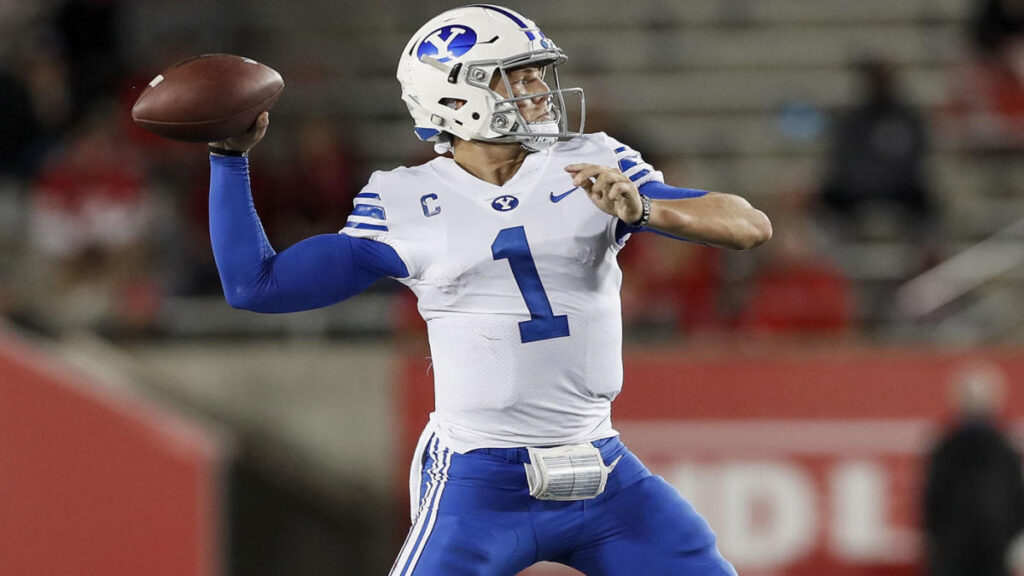
Source: bestballstats.com
While the spotlight often shines brightest on offensive and defensive playmakers, the role of NFL special teamers is just as pivotal to the outcome of the game. These athletes carry out specialized and highly technical tasks that demand precision and, often, a specific physical stature. In assessing the NFL special teamers average height by position, it is clear that each role has its unique height considerations. Analyzing NFL player heights in 2024 reveals an intriguing trend where these players hold significant variance in height based on their specialized skills.
This variance in height aligns with their on-field duties. Long-snappers, for instance, require both agility and size, with an average height of 6 feet 2.03 inches (188.04 centimeters). Their abilities are crucial during clutch kicking situations. On the other hand, kickers, who focus on accuracy and technique over size, have a slightly lower average at 6 feet 1.47 inches (186.6 centimeters), indicating that while height could provide an advantage, it’s the precision and consistent performance that truly counts. Punters, striking a balance in size with an average height of 6 feet 2.4 inches (188.96 centimeters), leverage their height for a better striking position for punts, affecting the game’s momentum with each kick.
The 2024 NFL Player Height Averages by Position for special teamers highlights not just the essential nature of their roles, but the adaptability of the NFL when it comes to player physique. As such, special teamers remain an integral aspect of football strategy, often providing the edge needed to claim victory in tightly contested matchups.
The Underdogs: Success of Undersized NFL Players
Challenging the conventional norms of NFL player average height by position, undersized NFL athletes have consistently demonstrated that prowess on the playing field isn’t solely determined by stature. In the narrative of the National Football League, where the height breakdown of NFL players 2024 continues to loom large, stories of smaller athletes prevailing serve as a potent reminder of the sport’s inclusive spirit. Analyzing NFL player heights in 2024 reveals a fascinating subplot—that of the underdog triumphing against the odds.
Inspirational Accounts of Less Tall NFL Athletes
In recent seasons, the league has seen athletes such as Boston Scott, listed at 5’6″, defy size expectations. With impressive accomplishments including scoring 17 touchdowns, Scott’s career trajectory punctuates the debate around analyzing NFL player heights in 2024. His achievements underscore a critical aspect of the sport: the notion that competitiveness and agility can effectively outweigh the benefits of height in key situations on the field.
Heart Over Height: The Triumph of Dedication and Skill
“It’s not the size of the dog in the fight, but the size of the fight in the dog.” – Archie Griffin, two-time Heisman Trophy winner.
This maxim resonates within the NFL, where the heart and hunger exhibited by players of lesser height often cast a long shadow over their physical limitations. Their journey is not just one of personal triumph but a testament to the unwavering spirit that lies at the heart of American football—a sport where dedication, skill, and strategic acumen can redefine an athlete’s potential irrespective of their height.
| Player | Height | Position | Touchdowns | Years in NFL |
|---|---|---|---|---|
| Boston Scott | 5’6″ | Running Back | 17 | 5 |
| Tarik Cohen | 5’6″ | Running Back | 21 | 4 |
| Cole Beasley | 5’8″ | Wide Receiver | 33 | 9 |
As the 2024 season looms on the horizon, a cadre of similar figures will inevitably strike their claim on the gridiron, fueled by talent and the unyielding resolve to make an indelible mark on the game. These players prompt us to cast aside preconceived notions of the ideal athlete and to celebrate diversity in all of its forms, both in stature and in spirit.
Positional Height Comparison: From Quarterbacks to Punters
Insight into the NFL player height comparison by position 2024 reveals significant variances that are tailor-made for each player’s role on the gridiron. The physical attributes required for peak performance underscore NFL player height trends 2024 as an essential factor in team composition and strategy. A systematic look at NFL player height statistics 2024 offers a detailed understanding of how each position uniquely leverages player height to gain competitive advantages.
| Position | Average Height | Role-specific Advantage |
|---|---|---|
| Quarterback | 6’3″ | Field command and visibility |
| Running Back | 6’0″ | Agility and compact power |
| Wide Receiver | 6’2″ | Reach and handling |
| Tight End | 6’3″ | Catching ability and blocking support |
| Offensive Lineman | 6’5″ | Protection and power blocking |
| Defensive Lineman | 6’3″ | Leverage and pass rush technique |
| Linebacker | 6’2″ | Versatility in run stopping and coverage |
| Defensive Back | 6’0″ | Coverage quickness and vertical reach |
| Special Teamer | 6’2″ | Specialized kicking and return abilities |
| Punter | 6’2″ | Kicking leverage and precision |
These figures are critical in formulating a holistic view of the importance of height across varying positions on the field. For instance, a quarterback’s heightened visibility allows for a better read of the defense, while a wide receiver’s taller stature can enhance their catching radius. This comprehensive overview continues to feed the scouting and development narrative for NFL franchises.
Conclusion

Source: yourdictionary.com
In conclusion, the NFL player average height by position in 2024 captures more than just a set of numbers; it encapsulates the very essence of each role’s distinct physical requirements. The league’s ongoing commitment to detail is reflected in the annual NFL player height data analysis, which highlights an array of athletic builds customized for optimal performance on the field. From the towering linemen to the agile receivers, every inch plays a role in crafting the strategic framework of a team. This keen attention to physical dimensions is a testament to the thoughtful engineering behind crafting a successful NFL roster.
As the 2024 NFL Player Height Averages by Position are surveyed, it becomes evident that while benchmarks for stature are instrumental, they do not constrict the immense potential for excellence in football. Resilience, technique, and strategic insight often outweigh the advantages of physical attributes alone. Amidst this landscape, the narratives of outstanding achievers who defy traditional height expectations continue to resonate, weaving a rich chronicle of achievement that transcends mere physicality. Such instances serve as powerful anecdotes, reinforcing the notion that in the realm of high-octane professional football, tenacity and talent are as significant as any measure.
Ultimately, this comprehensive examination of stature among NFL ranks underscores a larger pattern in athletic evolution and game-day strategy. While the statistical tapestry paints a picture of an ever-adapting sport, it also enshrines the fundamental truth of American football: that it is a game for all shapes and sizes, where legends rise not just by the centimeter but by the immense scope of their grit and prowess on the gridiron.
FAQ
What is the average height of NFL players in 2024 by position?
The average height of NFL players varies by position, with quarterbacks around 6’3″, wide receivers at approximately 6’2″, tight ends around 6’3″, offensive linemen at 6’5″, defensive linemen at around 6’2.93″, linebackers at 6’2.62″, defensive backs around 6′, and special teamers ranging with kickers at 6’1.47″, punters at 6’2.4″, and long-snappers at 6’2.03″.
Has there been a change in the average height of NFL quarterbacks over the years?
Yes, there has been a slight variation in the average height of NFL quarterbacks over the years. While the ideal height has often been around 6’2″ to 6’3″, players like Kyler Murray have shown that quarterbacks of varying heights can still be successful in the league.
Are NFL players generally taller than athletes in other sports?
NFL players are typically taller than the average MLB player but shorter than the average NBA player. The physical demands and the nature of the respective sports contribute to the height differences among these athletes.
Do NFL running backs have a standard height, or does it vary?
The height of NFL running backs can vary depending on their playing style and the specific needs of their team’s offense. On average, they measure at about 6’0″, but there is a wide range of heights within the position.
How does the height of wide receivers affect their game play?
The height of wide receivers can significantly impact their ability to catch passes and win jump balls against defenders. Taller wide receivers, averaging around 6’2″, often have an advantage in reach and handling, which can be critical in tight coverage situations.
Are there examples of successful NFL players who are considered undersized for their position?
Yes, there are numerous examples of successful NFL players considered undersized for their position. For instance, Boston Scott, standing at 5’6″, has proven his worth as a running back with notable performances and touchdowns.
Does height play a significant role in the effectiveness of NFL defensive players?
While height can be beneficial for leverage and visibility, it is not the sole determinant of success for defensive players. Successful defensive linemen like Aaron Donald, who is 6’1″, demonstrate that other factors such as strength, speed, and technique are equally critical.
Can the average heights of NFL players predict the trends for the 2024 season?
The average heights of NFL players can provide an insight into potential trends for the 2024 season; however, player performance, emerging strategies, and the dynamic nature of the league may also influence these trends.

